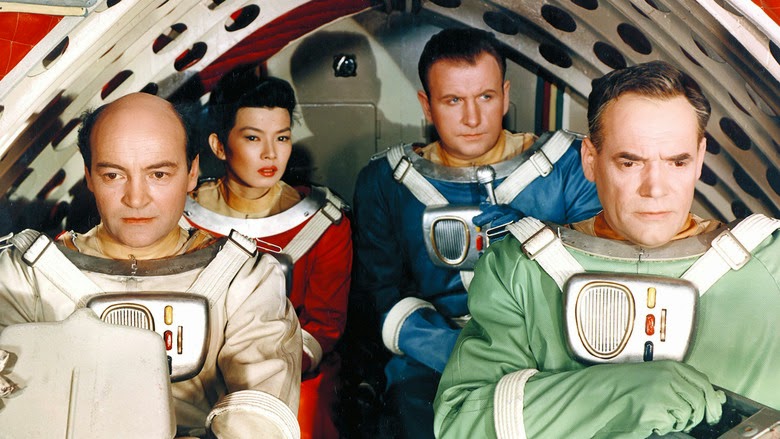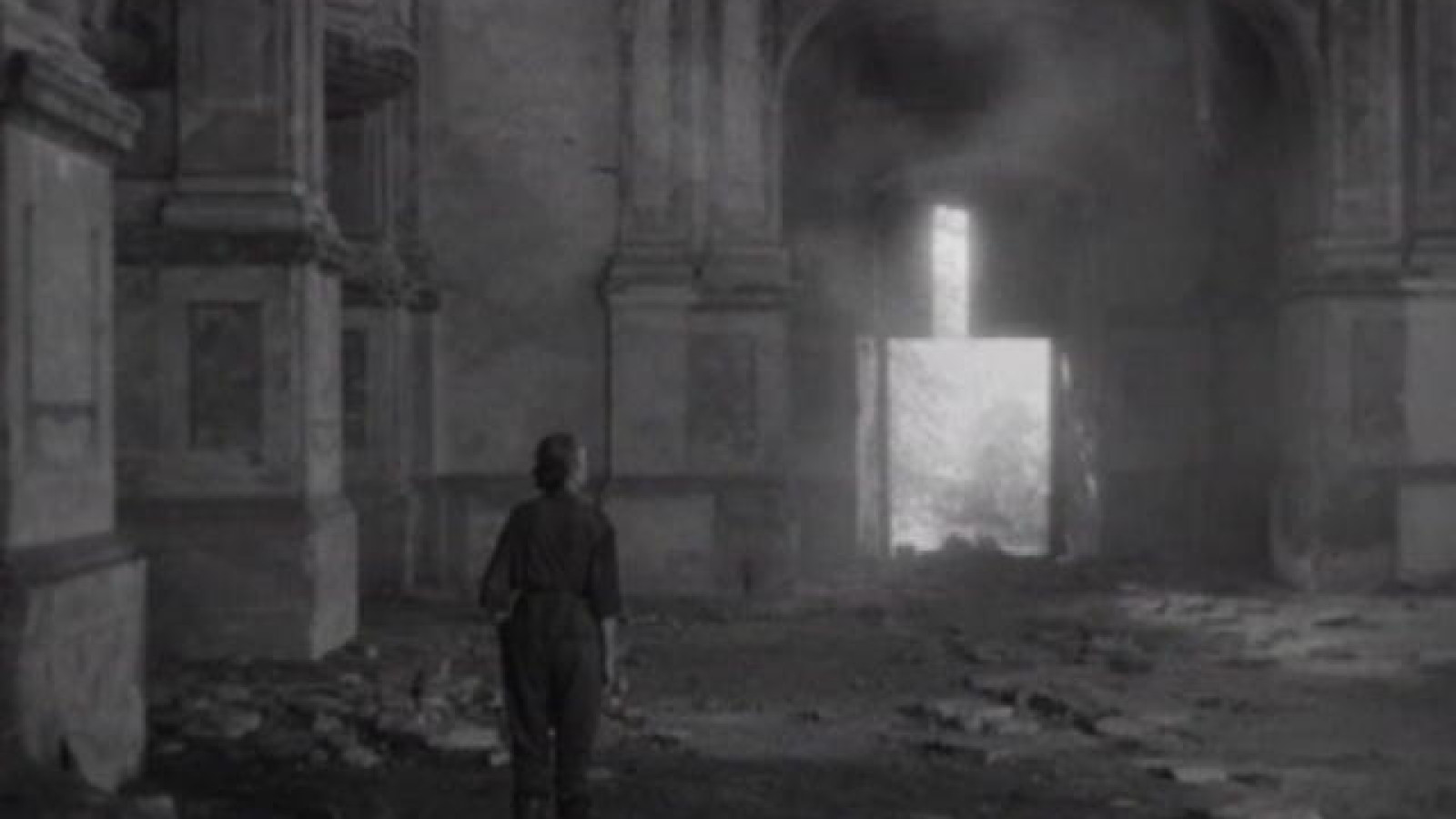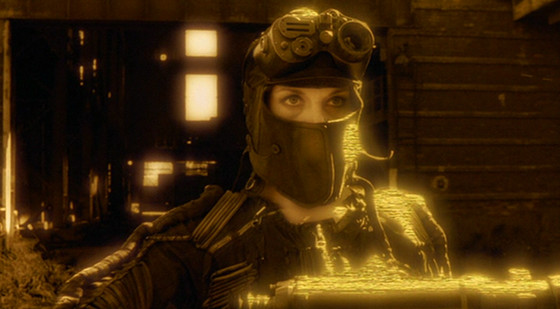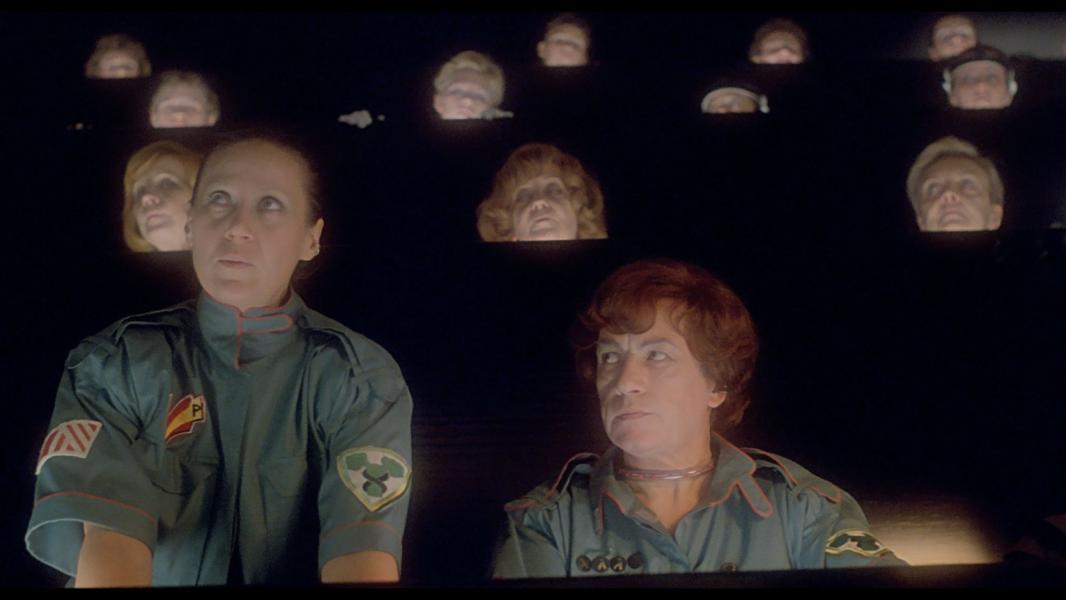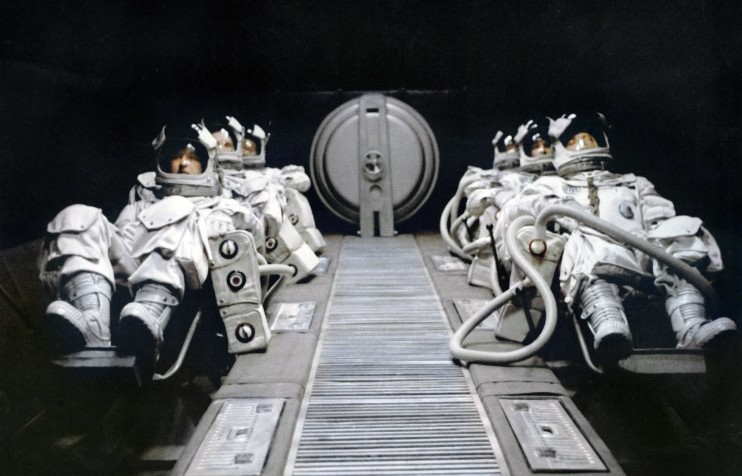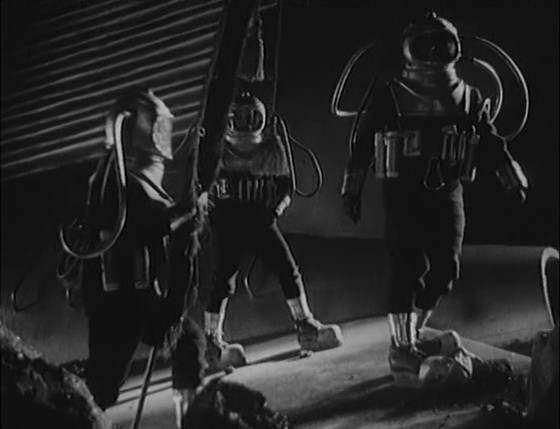7. First Spaceship on Venus (Kurt Maetzig, 1960)
First Spaceship on Venus is a collaboration between East Germany and Poland. Like, Solaris, it is based on a story by the Polish science fiction author Stanislaw Lem. Investigators discover that the Tunguska explosion in Siberia (a real event that has sparked numerous conspiracy theories) was the result of a crashing spaceship.
Among the wreckage, they find a “memory spool”, thought to contain information about the alien race who crashed to earth. Before translation of the spool is complete, a crew is formed and sent on its way to Venus, but shortly after their journey has begun it is revealed that the spool contains a plot for the invasion of earth.
The film is often dismissed as a propagandistic b-movie, and yes, there are elements of preachiness. But this does not impinge too much on the film’s old fashioned sense of fun (think Forbidden Planet), and its unique – for the time – renderings of alien landscapes and futuristic technology.
8. The End of August in The Hotel Ozone (Jan Schmidt, 1967)
This evocatively titled Czech film takes place in an undefined location on post-apocalyptic earth. For much of the film there are only women, all young except for one older woman who takes responsibility as leader of the group. The film begins with static shots of humanless places, while ominous countdowns are heard in various languages.
For most viewers, given the time of the film’s creation, this establishes a scenario of nuclear apocalypse. With more than a little hyperbole, the film has sometimes been deemed “Mad Max directed by Andrei Tarkovsky”.
The Mad Max comparison is invited by the occasional savagery of the women (there is some real violence towards animals), and the ruined setting, while the slowness and often beautiful cinematography indeed suggests Tarkovsky at times. But overall the film has its own peculiar bleakness that makes it worth tracking down for its own sake.
9. Avalon (Mamoru Oshii, 2001)
Avalon is directed by the Japanese Mamoru Oshii, best known for futuristic animation. It is included in this list because of the involvement of many Polish people in the crew (notably the cinematographer) and cast, and the fact that it is set in Poland.
Peter Bradshaw suggested that the film is a little like The Matrix, directed by Bela Tarr. Indeed, it is an often slow and monochrome film that deals with virtual worlds. Given the centrality of gaming, comparisons with Cronenberg’s Existenz are clear here too.
The film is set in a glum, depresseive Poland, where many are addicted to a potentially fatal game called Avalon. Malgorzata Foremniak plays Ash, a professional player of Avalon, who risks her life to explore an advanced level of the game.
10. Sexmission (Juziusz Machulski, 1984)
Sexmission has cult status in Poland, no doubt helped by its subtle satire of the time’s political status quo, and its surreal humor. When Max and Albert undergo an experiment in human hibernation, they wake up far later than planned: in the year 2044. The world they find has been ravaged by nuclear war, and humanity is resigned to living in underground facilities.
Similarly to the world imagined in The End of August in The Hotel Ozone, all the men have been killed off by radiation, and the manless society has constructed a whole mythology about the evils wrought by males. The society’s antipathy towards men means that the two protagonists end up faced with two stark options: forced gender-reassignment or escape.
11. Pilot Pirx’s Inquest (Marek Piestrak, 1978)
Pilot Pirx’s Inquest is a Polish/USSR collaboration based, again, on a story by Stanislaw Lem. Pirx is a pilot given the task of evaluating the performance of robots as crew members. When there is a serious accident aboard the ship, Pirx becomes the main suspect. The film then becomes something of a spy thriller.
The film is perhaps more ruminative than spectacular: it is slowly paced and not as tense as it could be. That said, it does a good job at raising perennial ideas about humans versus artificial intelligence. And for fans of contemporary classical music, the film features an electronic score by well-known Estonian, Arvo Part.
12. Aelita (Yakov Protazanov, 1924)
Aelita is based on a story by Tolstoy, in which an engineer creates a ship that can fly to Mars. The engineer sets off on his journey with Gusev, a soldier. When they discover that Mars is inhabited by a humanoid civilisation, Gusev is only concerned with conquering the planet. But Los, the engineer, falls in love with Aelita, the daughter of the planet’s ruler.
As is to be expected, there are ideological underpinnings to the film, but that just adds to the fascination here, as an early and rather rare example of Soviet science fiction from the 1920s.
13. Cosmic Voyage (Vasili Zhuravlev, 1936)
Cosmic Voyage is considered pioneering in its use of real scientists to ensure the relative plausibility of everything on screen. Soviet rocket scientist Konstantin Tsiolkovsky, for example, was hired to design the spacecraft.
Still, the film has the same sense of naivety that one sees in so many science fiction and fantasy films of the era: cinema itself, after all, was a whole new world with many unexplored territories, and that sense of adventure is very much present in Cosmic Voyage. The film concerns itself with a series of botched attempts to send a manned rocket to the moon.
